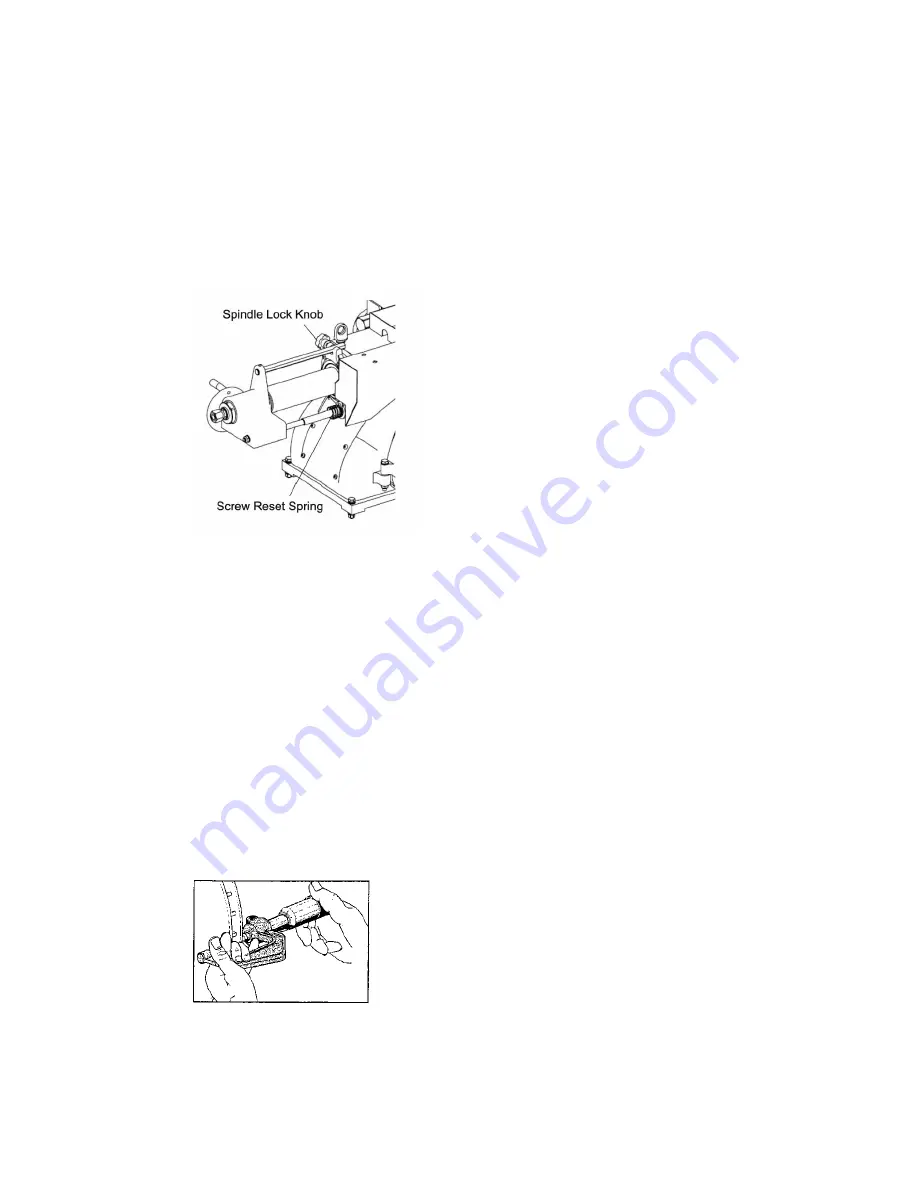
20
until the cutter move to the drum outside. Turn off the drum/rotor switch and
spindle motor switch.
21. Spindle feed speed should be adjusted by feed timing potentiometer. High
speed used to roughing cut, low speed used to finish cut.
NOTE:
Refer to rotor diameter to find spindle speed and feed speed. Large
diameter, you should select low speed; small diameter, you should select high
speed.
“Some experimentation may be required for optimum surface
finish.”
22. When moving to the terminal
position, nut separate from the screw,
you should turn off the power switch,
turn the spindle feed handwheel
clockwise, so the screw and the nut
can mesh each other again. Screw
reset spring can do it, you can see
fig.18.
Fig18
Reconditioning Disc Brake Rotors
Preparation
1. Inspect the rotor carefully for scoring, rust ridges (at the inner and outer
circumference of the rotor), and hard spots. Any excessive wear or deformity
should be noted and if not within acceptable limits, the rotor should be
replaced.
2. Use a micrometer to check the thickness of the rotor at no less than 3
points around the circumference about 1" (2.54mm) in form the outer diameter.
If the rotor thickness varies between readings, it should be reconditioned.
However, if the thickness is less than the minimum established by the
manufacturer, or if will be less after reconditioning, the rotor should be
replaced.
Note:
Most often the discard thickness dimension is cast or stamped into the
rotor, not the minimum machine to thickness.
Figure 19 – Measure rotor thickness









































